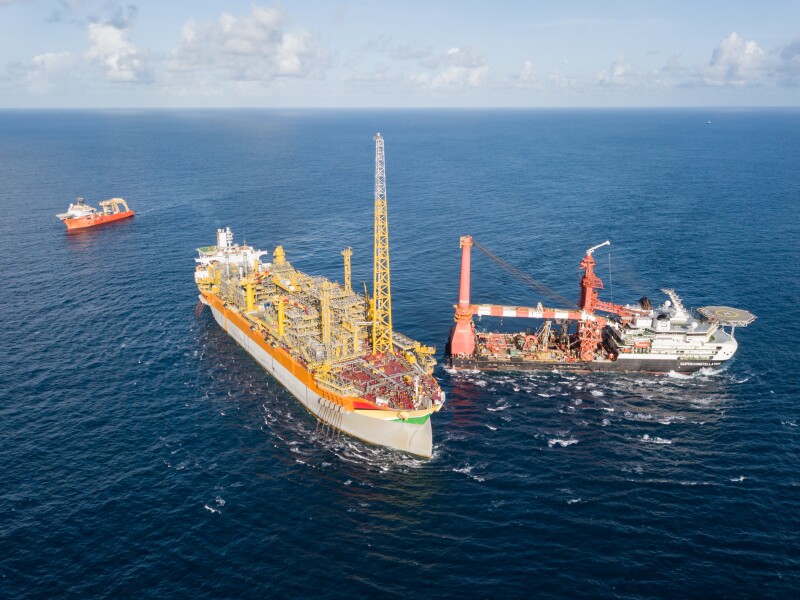Guyana received bids on eight of the 14 offshore oil exploration blocks in its latest bidding round, according to the country’s Ministry of Natural Resources. The ministry confirmed that ExxonMobil, Hess, and CNOOC bid as a group, while another consortium made up of TotalEnergies, Qatar Energy, and Petronas was also said to have been active in the sale.
After a string of offshore exploration successes led by ExxonMobil, the country is eager to expand its footprint further in the global energy space and recruit a wider range of partners beyond ExxonMobil, which controls most of the resources that have been discovered. The supermajor has found over 11 bbl barrels of recoverable reserves over the past several years, chiefly in the prolific Starbroek block.
The auction had been delayed three times since 2022. In June, the most recent delay, country officials said they were working to firm up the terms of the related production-sharing agreements, get additional information out to would-be bidders, and give potential suitors more time to review the block data.
“It’s not a disappointment,” said Guyana’s President Irfaan Ali during an event in Washington organized by the Inter-American Dialogue on 13 September, replying to a question.
“We went out on auction at a time when big economies in the world are basically saying to all producers ‘we’re not going to finance’ … We went to this market with 14 blocks and we got response for eight blocks. We are very happy,” he added, according to Reuters.
Other bidders included a consortium formed by Delcorp, Watad Energy, and Arabian Drillers; another with Liberty Petroleum and Cybele Energy; and a group comprising International Group Investment and Montego Energy, a document reviewed by Reuters showed. Guyana’s Sispro submitted an offer by itself.
The government will evaluate the offers in the coming weeks. It is slated to award any new contracts by 1 November.
Guyana is currently producing and exporting about 380,000 BOED, making it Latin America’s seventh-largest producer. The ExxonMobil consortium itself is on track to reach 1.2 million B/D of output from its chain of developments by 2027.
In April, ExxonMobil made a final investment decision for the $12.7-billion Uaru development offshore Guyana after receiving the required government and regulatory approvals. The company expects Uaru, the fifth project on Guyana’s offshore Stabroek block, to add 250,000 bbl of daily capacity after a targeted startup in 2026.
“Our fifth, multibillion-dollar investment in Guyana exemplifies ExxonMobil’s long-term commitment to the country’s sustained economic growth,” said Liam Mallon, president of the ExxonMobil Upstream Company. “Our Guyana investments and unrivalled development success continue to contribute to secure, reliable, global energy supplies at this critical time.”
The Uaru project plans to include up to 10 drill centers and 44 production and injection wells. The discovery holds an estimated resource of more than 800 million bbl of oil.
The US Geological Survey estimates that Guyana’s coastal area has roughly 13.6 bbl barrels of oil reserves and gas reserves of 32 Tcf.


